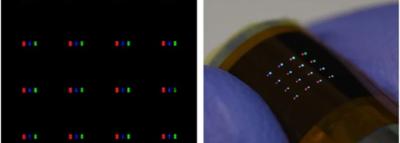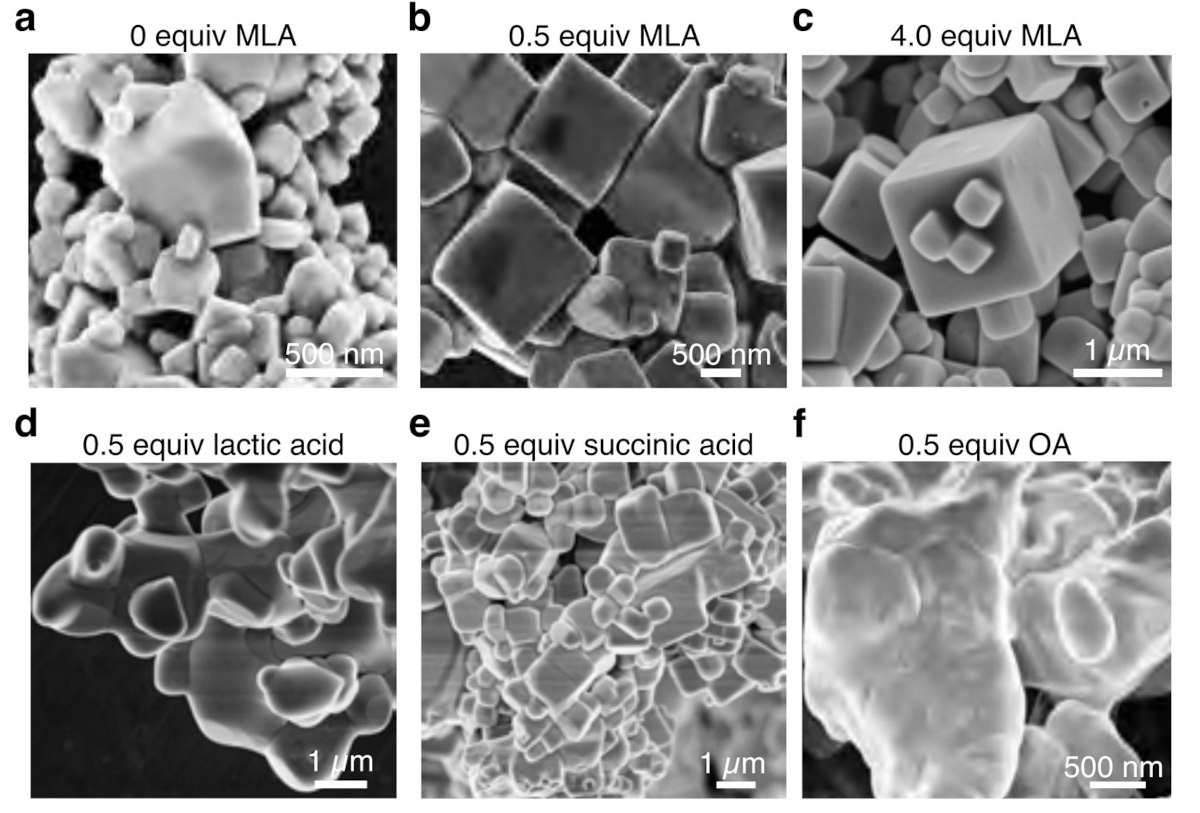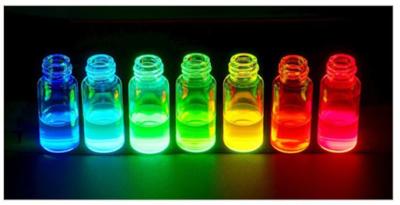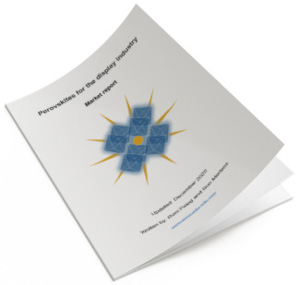Perovskite Quantum Dots (PQDs) - Page 3
TCI's molecular dopants boost organic electronics
TCI has launched a range of molecular dopants that can significantly increase the charge carrier density and modify the energy levels in organic electronics devices. Molecular dopants offer a versatile platform to tune the optoelectrical and electrical properties of organic semiconductors to application-specific demands, allowing advantages like increasing the electrical conductivity and mobility by orders of magnitude and improving contact properties in various electronic and optoelectronic devices.
TCI's p-type and n-type dopants can be applied to various organic electronics devices, such as: carrier transport layers of organic light-emitting diodes (OLEDs), organic photovoltaics (OPVs), perovskite solar cells (PSCs), and perovskite quantum dot LEDs, as well as active layers of organic field-effect transistors (OFETs), OPVs, and thermoelectric devices in the field of organic electronics research.
Canon develops perovskite quantum-dot inks for use in next-gen displays
Canon has announced that it has developed perovskite quantum-dot inks for use in next-generation displays, with improved durability and potential for application in high-image-quality displays.
Quantum dots are semiconductor nanocrystals that measure only a few nanometers in diameter and can emit light with high brightness and high color purity. Displays with quantum-dot technology are attracting growing attention due to their wide color gamut that makes possible high visual expressiveness. Therefore, quantum dots for display is sought to achieve higher color purity and higher light utilization efficiency. In addition, though cadmium (Cd) has thus far been the preferred material for quantum dots, due to environmental concerns, there is a growing interest in Cd-free materials.
Researchers design novel HTMs for perovskite quantum dot solar cells
Researchers fromKorea's Pohang University of Science and Technology (POSTECH), Ajou University, Daegu Gyeongbuk Institute of Science and Technology (DGIST) and Kookmin University have designed new polymeric hole transport materials that constitute a crucial element in perovskite quantum dot solar cells, leading to significant increase in their efficiency.
The team's hole transport materials include polymers based on sulfur and selenium compounds. These polymers exhibit structural features, such as planarization and locking of intermolecular arrangements, which increase charge mobility. Furthermore, asymmetric alkyl substituents of the polymers facilitate molecular interactions, thereby complementing the electrical properties of cells.
Perovskite-Info launches a new edition of its Perovskite for Displays Market Report
Perovskite-Info is proud to announce an update to our Perovskite for the Display Industry Market Report. This market report, brought to you by the world's leading perovskite and OLED industry experts, is a comprehensive guide to next-generation perovskite-based solutions for the display industry that enable efficient, low cost and high-quality display devices. The report is now updated to May 2023, with all the latest commercial and research activity.
Reading this report, you'll learn all about:
- Perovskite materials and their properties
- Perovskite applications in the display industry
- Perovskite QDs for color conversion
- Prominent perovskite display related research activities
The report also provides a list of perovskite display companies, datasheets and brochures of pQD film solutions, an introduction to perovskite materials and processes, an introduction to emerging display technologies and more.
Researchers fabricate full-color flexible microLEDs using perovskite QDs
Researchers from Korea's KIMM institute have fabricated full-color flexible microLED devices, using blue LEDs and perovskite quantum dot color conversion layers. The demonstrated device featured 1 mm pixel pitch LEDs (25.4 PPI) and could be bent with a radius of 5 mm without being damaged.

The researchers used a perovskite-QD and siloxane composite using ligand exchanged PQD with silane composite followed by surface activation by an addition of halide-anion containing salt. Due to this surface activation, the researchers say that it was possible to construct the PQD surface with a silane ligand using a non-polar organic solvent that does not damage the PQD. As a result, the ligand-exchanged PQD with a silane compound exhibited high dispersibility in the siloxane matrix and excellent atmospheric stability.
Researchers use perovskite and quantum dots to build an ultraviolet radiation measurement device
A team of researchers from China's Chinese Academy of Sciences (CAS), Jilin University and Beijing Institute of Technology, has used perovskite and quantum dots to build an ultraviolet radiation measurement device.
Measuring the intensity of ultraviolet light in outdoor conditions is important because more intense UV light can lead to faster sunburns and potentially to skin cancer in later years. In this new study, the researchers built a wearable device that can measure ultraviolet radiation in real-time and send the information to a smartphone.
Researchers develop new perovskite-based approach for blue quantum dots synthesis and analysis
Researchers from The University of Tokyo and Yamagata University have addressed the difficulty in creating blue quantum dots by developing a unique self-organizing approach for producing lead bromide perovskite quantum dots. The research also incorporates cutting-edge imaging technology to characterize these novel blue quantum dots.
Quantum dots (QDs) are used in optoelectronic devices and quantum computing, among other things, and are referred to as "artificial atoms" due to their confined and distinct electronic properties. Quantum dots have characteristics that fall in between those of bulk semiconductors and individual atoms and molecules. Their photoelectric qualities vary depending on their size and shape. Quantum dots (QDs) are considered attractive materials for the emissive constituent of light-emitting diodes (LEDs) due to their high color intensity in a small spectral region, facile color tunability, and notable stability. Moreover, QD-based materials exhibit refined colors, longer lifetimes, reduced production costs, and lower energy requirements compared to typical luminescent materials used in organic light-emitting diodes (OLEDs).
Researchers from the University of Japan develop a perovskite-based narrow-spectrum blue QD emitter
Researchers from the University of Tokyo have made progress with the development of blue-emitting quantum dots, which is seen as highly challenging. They have shown that using a new bottom-up design strategy and self-organizing chemistry can help create a high purity blue-emitting QD material (with a narrow emission spectrum).

The newly developed QDs have a special chemical composition that combines both organic and inorganic substances, such as lead perovskite, malic acid, and oleylamine. The materials self-aligned into a cube of 64 lead atoms. The lead researcher, Professor Eiichi Nakamura, says that "it took over a year of methodically trying different things to find that malic acid was a key piece of our chemical puzzle".
Researchers develop high-resolution perovskite nanocrystal patterning technique for displays
Researchers from the Ulsan National Institute of Science and Technology (UNIST) have teamed up with researchers from Daegu Gyeongbuk Institute of Science and Technology (DGIST) to develop a patterning technique for the production of perovskite nanocrystal displays which are ultra-thin and high-resolution. The production involves a very simple stamp-like printing process that will facilitate the commercialization of the new technique.
Double-layer transfer printing process with RGB pixelated arrays of PeNCs. Image from Science Advances
The technique reportedly enabled the team to produce a display with RGB pixel patterns of 2,550 pixels per inch, which is about 400 percent higher resolution than the latest high-end smartphones.
Researchers report that lattice distortion of perovskite QDs induces coherent quantum beating
A research team, led by Prof. Wu Kaifeng from the Dalian Institute of Chemical Physics (DICP) of the Chinese Academy of Sciences (CAS), in collaboration with Dr. Peter C. Sercel from the Center for Hybrid Organic Inorganic Semiconductors for Energy, recently reported the utilization of lattice distortion in lead halide perovskite quantum dots (QDs) to control their exciton fine structure.
Shape or crystal anisotropy in QDs results in energy splitting of their optically bright excitons (bound electron-hole pairs), known as fine structure splitting (FSS). For example, the excitons' FSS can be exploited for coherent control of quantum states for quantum computing, or for polarization-entangled photon-pairs in quantum optics, although for the latter it is important to suppress the magnitude of splitting. Studying FSS usually requires single or just a few QDs at liquid-helium temperature, due to its sensitivity to QD size and shape. Measuring FSS at an ensemble-level, much less controlling it, seems impossible unless all the dots are made to be nearly identical.
Pagination
- Previous page
- Page 3
- Next page







